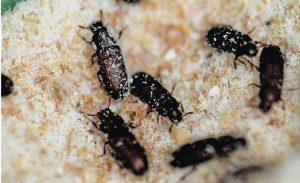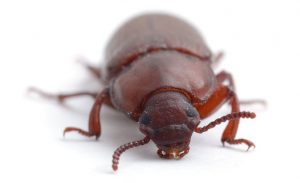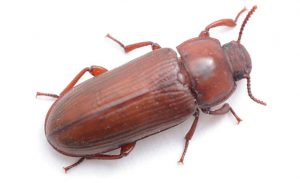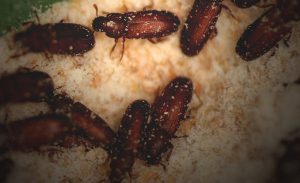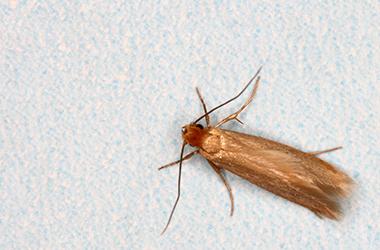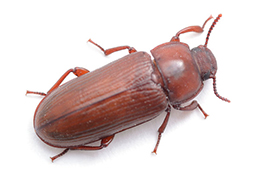
Flour Beetle Facts
- Scientific name: Tribolium or Tenebrio
- Types of flour beetles: Red flour beetle and confused flour beetles
- Size: 0.31 cm long
Flour Beetle Behavior
Along with a bevy of moths and other insects, flour beetles belong to a troublesome class of bugs known as pantry pests. Flour beetles infest homes in the US. Consuming wheat and other grains, flour beetles have adapted to survival in very dry conditions and can survive higher amounts of radiation than even cockroaches.
Highly resistant to pesticides, flour beetles present a major challenge in the agricultural industry. Flour beetles, like most pantry pests, usually come into homes in flour packaging and other grains, such as cereals, crackers, beans, pasta and cake mixes. Dried pet foods, birdseed, spices, dried flowers, chocolate and nuts are fair game for flour beetles to attack, as well. Dark, quiet cupboards also make excellent places for 1/8-inch-long adult flour beetle females to deposit their eggs.
Flour beetles undergo four metamorphic stages, from egg to larvae to pupae and adult. Flour beetles’ larvae feed on dried food products, contaminating food. Preferring high moisture products, flour beetle larvae create a gray cast in infested flour and baking mixes.
Although flour beetles possess chewing mouthparts, they do not bite or sting. The red flour beetle can cause allergic reactions but do not pose serious health treats to humans and pets. In addition to a gray tint, when flour beetles contaminate dried foods, they create an unpleasant odor and off-flavor in dried foods.
- Infestation
- How to Get Rid of Them
- Health Concerns
Beetles Photos
4 Seasons Pest Control

Satisfaction Guarantee
What it includes*
-
Ants
-
Crickets
-
Fleas
-
Mice
-
All Roaches
-
Scorpions
-
Spiders
-
Ticks
-
Wasps
-
Other*

